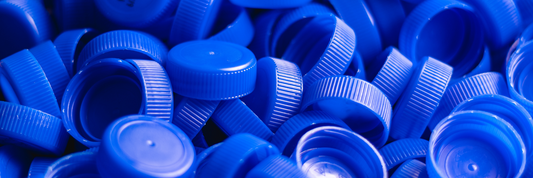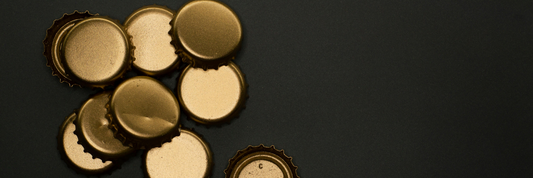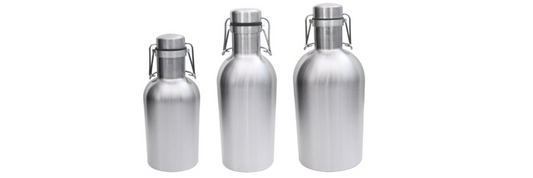Aluminum foil is widely used in various fields, from cooking and food preservation to other industries. With special features like being waterproof, heat-retaining, and non-stick, aluminum foil has become an indispensable part of our daily lives. This article provides a comprehensive overview of aluminum foil, including its origins, manufacturing process, types, characteristics, applications, benefits, harms, and safe usage tips.
- Can Aluminum Foil Go in the Microwave? Tips for Using Aluminum Foil Safety
- Can You Put Aluminum Foil In An Air Fryer?
- Can You Put Aluminum Foil In The Oven?
- What Is Aluminum Foil Made Of? How Is Aluminum Foil Made?
What is Aluminum Foil?
Aluminum foil is a thin sheet made from aluminum. Its shiny surface and characteristic silver color make it easily recognizable. Aluminum foil is commonly used to wrap food, cook, and preserve food due to its waterproof, heat-retaining, and non-stick properties. These features make aluminum foil a useful tool in the kitchen and various industries.

Origins of Aluminum Foil
The first aluminum foil was produced in 1903 and in 1911 it was used as packaging for toddler-tone chocolate bars from Switzerland. Thanks to this the chocolates were kept longer and could be sent further nowadays around 5 million tons of aluminum foil are used worldwide every year.
Compared to tin foil, aluminum foil has many superior advantages, such as being odorless, harmless when in contact with food, and having a higher aesthetic appeal. The technology for producing aluminum foil has continuously developed and improved, meeting the increasing demands of consumers.
Types of Aluminum Foil
There are two main types of aluminum foil commonly used:
- Standard Aluminum Foil: This is the most commonly used type of aluminum foil, typically used in cooking and food preservation. It has a moderate thickness, from 0.01 mm to 0.02 mm, enough to be waterproof and heat-retaining, and easy to shape and wrap various types of food.
- Industrial Aluminum Foil: This type of aluminum foil is thicker, ranging from 0.05 mm to 0.1 mm, and is usually used in industrial applications such as insulation, soundproofing, and protecting surfaces from corrosion. Industrial aluminum foil is designed to withstand harsh conditions and has higher durability.
Characteristics of Aluminum Foil
Aluminum foil has many outstanding characteristics:
- Waterproof: Aluminum foil helps keep food fresh for longer by preventing moisture and bacteria from penetrating.
- Heat Retention: Aluminum foil retains the temperature of food, helping it cook evenly and faster, and retains heat longer after cooking.
- Non-stick: It prevents food from sticking to surfaces during cooking, making it easier to clean up afterward.
- Flexible and Easy to Shape: Aluminum foil can be easily shaped and wrapped around various types of food, from small dishes to large roasts.

Aluminum Foil Uses
In Cooking and Food Preservation
Aluminum foil is widely used in cooking and food preservation. Some common applications include:
- Baking and Roasting: Aluminum foil helps retain moisture and prevent food from burning. When baking cakes, meat, or vegetables, aluminum foil helps food cook evenly and retain its natural flavor.
- Food Storage: Aluminum foil can be used to wrap food stored in the refrigerator or freezer, keeping it fresh for longer and preventing it from being affected by the odors of other foods.
- Quick Cooking: Aluminum foil can be used for quick cooking, such as wrapping fish or chicken before cooking in the microwave or oven.

In Other Industries
Aluminum foil also has many applications in other industries:
- Surface Protection: Aluminum foil is used to protect metal surfaces from corrosion and oxidation, especially in the aerospace and automotive industries.
- Electronics Industry: In the electronics industry, aluminum foil is used to protect components from electromagnetic interference and static electricity, ensuring stable operation of devices.
- Crafting: Aluminum foil can be used to make jewelry, toys, and other decorative items.
- Polishing: Aluminum foil can be used to polish metal objects.
Pros and Cons of Aluminum Foil
Pros
- Food Preservation: Aluminum foil helps keep food fresh for longer and prevents bacterial growth, especially effective for preserving perishable foods.
- Heat Retention: Aluminum foil retains the temperature of food, helping it cook evenly and keep warm longer after cooking, especially useful when hosting parties or transporting food.
- Convenience: Using aluminum foil saves time in cooking and food preservation, and is easy to clean up after use.
- Versatility: Aluminum foil can be used in various fields, from cooking, food preservation, insulation, and soundproofing, to surface protection and electronics.
Cons
- Health Risks if Used Incorrectly: When using aluminum foil at high temperatures, aluminum in the foil can react with food, especially acidic or alkaline foods, posing a risk of aluminum poisoning. Long-term exposure to aluminum can negatively affect health, including neurological and kidney issues.
- Environmental Impact: Aluminum foil is not biodegradable, and its production consumes a lot of energy, causing environmental pollution. Improper disposal of aluminum foil also contributes to increasing non-biodegradable waste.
A Few Notes on Using Aluminum Foil in Food Preparation
- Avoid allowing grease to spill onto the foil, causing the food to burn or char, which makes the food both unpalatable and harmful to health.
- Do not wrap food too tightly in aluminum foil, as it will cause uneven cooking.
- Avoid recycling aluminum foil. After each use, the foil may be burned or torn.
- Choose thick, good-quality aluminum foil for grilling food.
- Do not put aluminum foil in the microwave. Aluminum foil can cause sparks when cooking in the microwave.
- Do not use aluminum foil to line the bottom of the oven as it may damage the oven.
- It is best not to use aluminum foil to wrap foods with high acidity. Experts say that acids in food can react with aluminum foil. This not only reduces the flavor of the dish but also facilitates the faster, higher penetration of aluminum ions into the body.
Frequently Asked Questions About Aluminum Foil
Why Foil Is Shiny On One Side?
Aluminum foil is shiny on one side and dull on the other due to the manufacturing process. When aluminum is rolled out to the desired thickness, it is passed through rollers in pairs. The sides that are in contact with the rollers become shiny, while the sides that are in contact with each other remain dull. This is simply a result of the way the foil is rolled and does not affect its performance or properties.
Why Is Aluminum Foil Popular In Packaging?
Aluminum foil is popular in packaging because of its excellent barrier properties, lightweight nature, recyclability, thermal conductivity, strength, durability, and ability to preserve the quality and freshness of products.
Which Side of Aluminum Foil is Non-stick?
The non-stick side of aluminum foil is the dull side. Non-stick aluminum foil is specially treated on one side to prevent food from sticking to it
Can I Use Aluminum Foil For Cookies?
Yes, you can use aluminum foil for baking cookies. However, it's recommended to lightly grease the foil to prevent the cookies from sticking. Using parchment paper is generally a better option as it provides a non-stick surface and helps cookies bake evenly.
Conclusion
Aluminum foil is a useful and versatile tool in many areas of life. However, the use of aluminum foil needs to be done intelligently and reasonably to avoid potential harm to health and the environment. Hopefully, through this article, you have gained a comprehensive and deeper understanding of aluminum foil and how to use it effectively in daily life.









